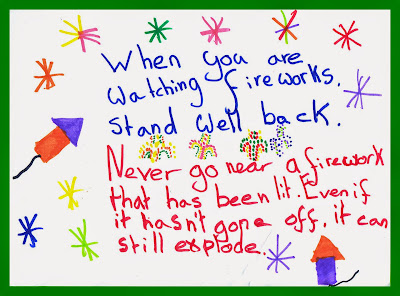The NWEA findings reveal that, when compared with the previous year the students scored between 5 and 10 percentile points less in math as students in grades three, four , and five seeing the greatest drops. "Given we’ve also witnessed reports from school districts of greater levels of absenteeism across numerous schools and schools, this is something we need to be extremely worried regarding," researcher Megan Kuhfeld told reporters.1 English scores in the language arts were similar to the previous year. The NWEA findings reveal that, when compared with the previous year the students scored between 5 and 10 percentile points less in math as students in grades three, four , and five seeing the greatest drops. NWEA President Chris Minnich pointed to the pattern of math that is sequential in which one year’s math skills — or deficits carry over into the next year.1
English scores in the language arts were similar to the previous year. "The maths problem is a real one and something we’ll have to be faced with when we’re back in the classroom," he said. NWEA President Chris Minnich pointed to the pattern of math that is sequential in which one year’s math skills — or deficits carry over into the next year.1 NWEA assessed the performance of students at different grades on the 2019 and the 2020 tests. "The maths problem is a real one and something we’ll have to be faced with when we’re back in the classroom," he said.
It also assessed the development of students over time depending on how each student scored on the tests which were administered shortly before the closure of schools and on tests that were administered in the in the fall.1 NWEA assessed the performance of students at different grades on the 2019 and the 2020 tests. Both of the measures showed that students are making progress in math but not as quickly as they do in normal years. It also assessed the development of students over time depending on how each student scored on the tests which were administered shortly before the closure of schools and on tests that were administered in the in the fall.1
The results confirm that students will lose ground during the outbreak but also show that those decreases are not as significant as those projected in spring, built on normal "summer slides" learning loss. Both of the measures showed that students are making progress in math but not as quickly as they do in normal years.1 A report released in November from Renaissance Learning Inc., using its own testing standardized by the company and findings, also revealed troubling regressions in math as well as lesser reading loss. The results confirm that students will lose ground during the outbreak but also show that those decreases are not as significant as those projected in spring, built on normal "summer slides" learning loss.1 Its Renaissance Learning analysis looked at the results of 5 million children aged 1-8 that completed Star Early Literacy reading or math tests between the months of fall 2019 and in 2020.
A report released in November from Renaissance Learning Inc., using its own testing standardized by the company and findings, also revealed troubling regressions in math as well as lesser reading loss.1 It revealed that students of all grades performed below expectations in math in the first week of school, with some classes having a deficit of 12 weeks or more. Its Renaissance Learning analysis looked at the results of 5 million children aged 1-8 that completed Star Early Literacy reading or math tests between the months of fall 2019 and in 2020.1 Black, Hispanic, American Indian and students at schools with a majority of low-income families suffered more, but the pandemic isn’t yet causing any significant changes to existing gap in achievement as the Renaissance report found. It revealed that students of all grades performed below expectations in math in the first week of school, with some classes having a deficit of 12 weeks or more.1 NWEA declared that although there were some differences among ethnic and racial groups in its analysis however, it was too in the beginning to draw any conclusions.
Black, Hispanic, American Indian and students at schools with a majority of low-income families suffered more, but the pandemic isn’t yet causing any significant changes to existing gap in achievement as the Renaissance report found.1 Andre Pecina, assistant superintendent of student services at the Golden Plains Unified School District located in San Joaquin, California, stated that his district has been scrambling to prevent loss of learning by providing devices to all of its students. NWEA declared that although there were some differences among ethnic and racial groups in its analysis however, it was too in the beginning to draw any conclusions.1 However, the school district continues to struggle in connecting students living at home. Andre Pecina, assistant superintendent of student services at the Golden Plains Unified School District located in San Joaquin, California, stated that his district has been scrambling to prevent loss of learning by providing devices to all of its students.1
Students who typically are 1.5 grades behind are two grade behind, he said. However, the school district continues to struggle in connecting students living at home. "We’ve basically got back to fundamentals, and we’re now focusing on math and literacy. Students who typically are 1.5 grades behind are two grade behind, he said.1 We do that all the time," Pecina said. "We’ve basically got back to fundamentals, and we’re now focusing on math and literacy. "I believe we’re doing to be the best we can," he said. "Our students are very engaged but the environment isn’t optimal.
We do that all the time," Pecina said.1 The learning environment isn’t ideal." "I believe we’re doing to be the best we can," he said. "Our students are very engaged but the environment isn’t optimal. (c) (c) The Associated Press. The learning environment isn’t ideal." The Associated Press reserves all rights. (c) (c) The Associated Press.1
This material cannot be broadcast, published or distributed in any way without prior permission. The Associated Press reserves all rights. Citation : Study: Students falling behind in math during pandemic (2020, December 1) retrieved 23 October 2022 from https://phys.org/news/2020-12-students-falling-math-pandemic.html.1 This material cannot be broadcast, published or distributed in any way without prior permission. This document is protected by copyright. Citation : Study: Students falling behind in math during pandemic (2020, December 1) retrieved 23 October 2022 from https://phys.org/news/2020-12-students-falling-math-pandemic.html.1
Except for fair use for private research or study the content is not permitted to be reproduced without prior written permission of the author. This document is protected by copyright. The content is offered solely for informational purposes. Except for fair use for private research or study the content is not permitted to be reproduced without prior written permission of the author.1 The content is offered solely for informational purposes. Student’s progress is slipping in math during the pandemic. In this November.
14th, 2020 file photo, children demonstrate during a protest to call for New York Mayor Bill de Blasio to ensure that schools remain open. Study strategies. Doors to classrooms will open for pupils from elementary schools next week, but middle or high schoolers from New York City won’t return to learning in person until following the holidays, De Blasio said Monday on November 30. (AP Photo/Mary Altaffer, File) In many classes, note-taking, memorization, and retention is enough to earn an assessment grade of passing.1
A significant proportion of students from minority and low-income families did not attend school for tests this year making it more difficult to assess the impact of the disease on some of pupils who have the greatest vulnerability, the not-for-profit organization that manages the standardized tests said on Tuesday.1






Recent Comments